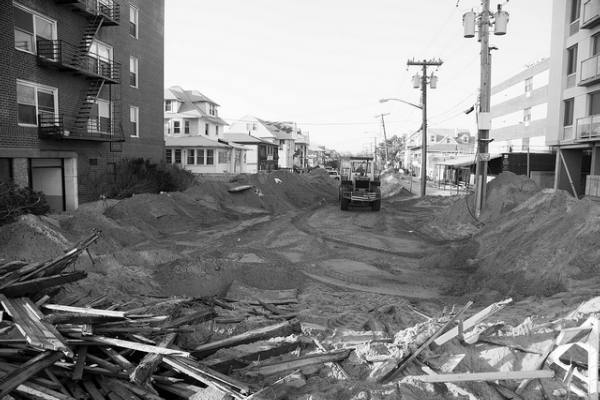
New York has made steady progress in recovering one year after Sandy, thanks in part to local non-profit organizations working tirelessly to rebuild homes and help the most vulnerable New Yorkers get their lives back on track.
Affordable housing organizations have been a lifeline for low-income individuals and families, those with the fewest resources to prepare for and recover from a disaster. Beyond the household level, these groups were pivotal in coordinating evacuations and recovery efforts in local communities after Sandy.
We must continue to provide these organizations, and the families they serve, with the support they still need to help our communities thrive.
Hurricane Sandy was a stark reminder of the importance of having a safe place to call home, with low-income families and the city’s affordable housing stock taking the hardest hit. According to the Furman Center for Real Estate & Public Policy, Sandy affected nearly 100,000 public, subsidized, or rent regulated units, and our analysis of Federal Emergency Management Agency data shows that 64 percent of people who rent their homes and registered for damages from Sandy had household incomes under $30,000.
Case in point is the story of Shyrell Wisdom, a published poet and resident of a supportive housing community for formerly homeless individuals with mental illness or addiction. Shyrell lived through hurricanes as a child in Jamaica, but she never expected one to ravage her home in Far Rockaway.
The day before Hurricane Sandy made landfall, the staff from Services for the Underserved, a group providing services and support for individuals with special needs, helped Shyrell pack her bags and evacuate to an emergency shelter. When she returned to her apartment a few days later, she found it filled with mold and insects. Shyrell and 70 other residents had to move to temporary apartments 20 miles away in the Bronx while SUS staff worked around the clock to repair their building.
{sidebar id=14}
Last month, Shyrell and her neighbors moved back into the newly renovated building. “It feels great to be back,” she says. “The staff worked so hard and that’s why I’m able to be here today. Because they are that supportive."
Stable, permanent affordable housing like SUS’ development is the building block for stabilizing vulnerable individuals and maintaining healthy communities. As part of ongoing resiliency efforts, we must continue to invest in housing that is accessible to New Yorkers like Shyrell. In New York City, 47 percent of low-income renter households pay more than half of their income on rent, leaving little to save for emergencies like Sandy. Individuals and families are better positioned to withstand disasters when they are in quality homes they can afford.
Furthermore, to safeguard existing public investments like affordable housing against future storms, we must invest in fortifying developments located in neighborhoods vulnerable to flooding and other natural disasters. As funding for community organizations like SUS gets tighter, we must allocate flexible dollars to rebuilding developments that are resilient to the changing climate.
There is hope that we can rebuild a stronger New York. Shyrell says, “The Rockaways have come back. It was neglected for a long time. Sandy helped us see the positivity and growth prospects of the Rockaways.” As New Yorkers, we must see the one-year anniversary of Sandy as a reminder of what we endured, and an opportunity to build back stronger together.
Shola Olatoye is the vice president and New York market leader for Enterprise Community Partners, Inc., a national nonprofit that has helped build or preserve more than 44,000 affordable homes for lower-income New Yorkers and invested more than $2.5 billion in and around the city.